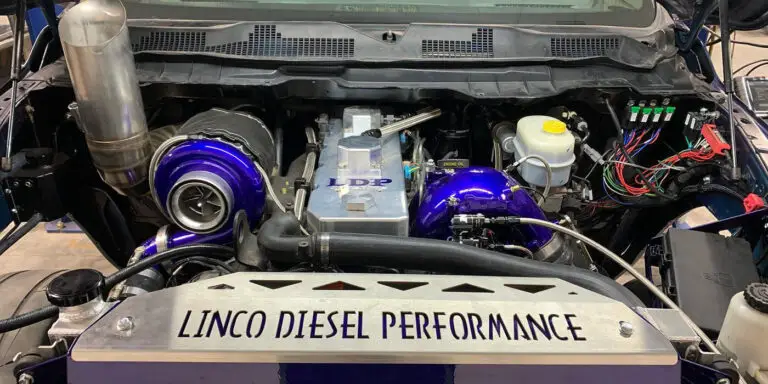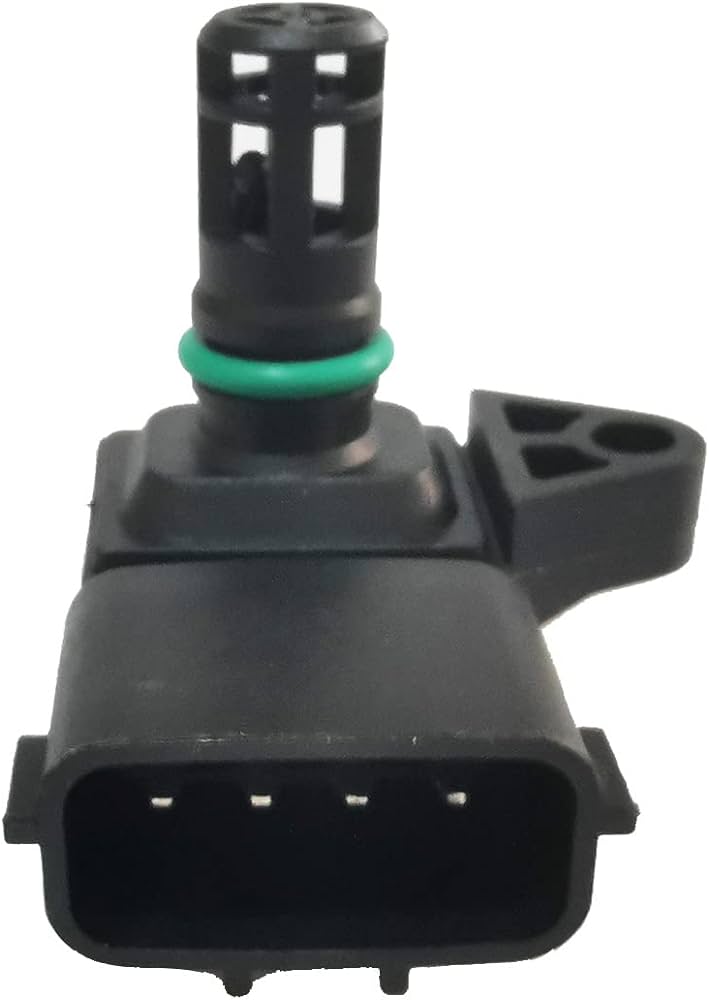5.9 Cummins Grid Heater Location: Unveiling the Power Within
The grid heater on a Cummins diesel engine is located directly between the air horn and intake manifold, and it is activated by a relay solenoid. The heater grid raises the incoming air charge, aiding in the ignition of the diesel fuel-air mixture.
Cummins diesel engines are known for their reliability and power. One crucial component of these engines is the grid heater, which plays a significant role in the ignition process. Understanding the location and function of the grid heater is essential for proper engine performance.
We will explore the exact location of the grid heater on a 5. 9 Cummins engine and its significance in raising the air charge for optimal combustion. Whether you’re a Cummins enthusiast or a diesel engine owner, this information will provide valuable insights into the inner workings of these robust engines. So, let’s dive in and uncover the grid heater’s secrets within the 5. 9 Cummins engine.

Credit: www.motortrend.com
Introduction To The 5.9 Cummins Grid Heater
What is a grid heater and its purpose?
A grid heater is a component of the 5.9 Cummins diesel engine that is located between the air horn and intake manifold. It is equipped with a relay that activates the heater grid when needed. The grid heater’s purpose is to raise the temperature of the incoming air charge as it passes over the grid. This heated air charge helps in igniting the diesel fuel-air mixture, especially during cold weather conditions.
Why is the 5.9 Cummins grid heater important?
The grid heater plays a crucial role in the proper functioning of the 5.9 Cummins engine. It ensures that the engine starts smoothly and efficiently, even in cold temperatures. Without the grid heater, the engine may experience difficulty in starting or may take longer to start. Therefore, it is essential to maintain and replace the grid heater if necessary to ensure optimal engine performance.
Understanding The Location Of The Grid Heater
Understanding the location of the grid heater on the 5.9 Cummins engine is essential for its proper functioning. The grid heater is generally located directly between the air horn and the intake manifold. This placement allows the heater grid to raise the incoming air charge as it passes over the grid. The heated air charge then aids in the ignition of the diesel fuel-air mixture in the engine.
It is worth noting that the grid heater operates on a similar principle as traditional glow plug systems, but with a single heating element. Unlike glow plugs, which heat the air in each individual cylinder, the heater grid heats the air and then draws it into the cylinders. This distinction is important to understand the difference between glow plugs and grid heaters.
If you are considering modifying your 5.9 Cummins engine by deleting the heater grid, you should be aware that a heater grid delete involves replacing the grid with a machined or cast spacer between the intake manifold and air horn. This modification can have an impact on engine performance and should be done with caution.
Common Issues With The Grid Heater
A common issue with the grid heater is its location in the 5. 9 Cummins engine, directly between the air horn and intake manifold. This heating grid helps raise the air charge temperature to aid in the ignition of the fuel-air mixture.
If the grid heater malfunctions, it can cause starting and performance issues.
Symptoms of a malfunctioning grid heater:
|
Grid Heater Replacement Options
Looking for grid heater replacement options for your 5. 9 Cummins? Your Cummins diesel engine is equipped with a relay that activates the heater grid located between the air horn and intake manifold. You can find replacement options on websites such as Amazon and Pusher Intakes.
Benefits Of Upgrading The Grid Heater System |
|
Your Cummins diesel engines have an air heating grid located on the intake manifold. The heater grid is used to raise the incoming air charge as the air passes over the grid. This heated air charge aids in the ignition of the diesel fuel-air mixture. Upgrading the grid heater system can offer multiple benefits:
|
Delving Into The Grid Heater Relay
Understanding the function of the relay in the grid heater system is crucial for maintaining the performance of your Cummins diesel engine. The relay is responsible for activating the heater grid, which is located between the air horn and intake manifold. This grid heats the incoming air charge as it passes over, aiding in the ignition of the diesel fuel-air mixture. The function of the relay is to control the activation of the grid heater, ensuring that it turns on when necessary. This helps to improve cold start performance and overall engine efficiency. If you’re experiencing issues with your grid heater, it’s important to check the relay and ensure it is functioning properly. By understanding the role of the relay in the grid heater system, you can better diagnose and address any potential problems.
Comparing Glow Plugs And Grid Heaters
The 5. 9 Cummins grid heater is located between the air horn and intake manifold, helping to raise the air charge for better ignition of the fuel-air mixture. It operates similarly to a traditional glow plug system but with a single heating element.
In a diesel engine, there are two main methods for preheating the air charge: glow plugs and grid heaters. While both serve the same purpose, there are some key differences between the two. Glow plugs are individual heating components that are installed directly in each cylinder. When activated, they heat up to assist in igniting the fuel-air mixture. On the other hand, grid heaters have a single heating element that is located between the air horn and intake manifold. The grid heater heats up the air charge and then draws it into the cylinders. One advantage of using a grid heater over glow plugs is that the grid heater warms up the air charge more quickly, resulting in faster engine startup. Additionally, the grid heater is less prone to failure compared to individual glow plugs. However, there are also some downsides to using a grid heater. It can put extra strain on the electrical system and may require a higher voltage to operate. Grid heaters are also more expensive to replace compared to individual glow plugs. Overall, the choice between glow plugs and grid heaters depends on various factors such as engine design, climate conditions, and personal preference.Performing A Grid Heater Delete
The grid heater on a Cummins diesel engine is an air heating grid located on the intake manifold. Its purpose is to raise the incoming air charge by heating it as it passes over the grid. This heated air charge helps with the ignition of the diesel fuel-air mixture. While the grid heater is an important component, some individuals may choose to perform a grid heater delete.
A grid heater delete involves replacing the heater grid between the intake manifold and air horn with a machined or cast spacer. This modification is not without its pros and cons. One benefit of removing the grid heater is the potential for improved airflow and increased horsepower. However, it’s important to note that removing the grid heater may require reprogramming the engine’s electronic control module (ECM) and can potentially lead to decreased fuel efficiency in colder climates.
Ultimately, whether or not to perform a grid heater delete depends on individual preferences and the specific use case of the vehicle. It’s recommended to consult with a qualified mechanic or specialist before making any modifications to ensure they align with the desired performance goals.
Frequently Asked Questions On 5.9 Cummins Grid Heater Location
Where Is The Heater Grid Solenoid On A Cummins?
The heater grid solenoid on a Cummins diesel engine is located on the intake manifold, between the air horn and the intake manifold. It is used to activate the heater grid, which raises the incoming air charge for better ignition of the fuel-air mixture.
What Is A Grid Heater On A 5.9 Cummins?
The grid heater on a 5. 9 Cummins is a component located between the air horn and intake manifold. It uses a relay to activate the heater grid, which raises the temperature of incoming air charge to aid in the ignition of the fuel-air mixture.
What Year Cummins Have Grid Heater Problems?
Cummins diesel engines with grid heater problems can occur in various years.
What Is The Difference Between Glow Plugs And Grid Heaters?
Glow plugs and grid heaters are similar, but the main difference is that a heater grid has a single heating element that heats the air and draws it into the cylinders, while glow plugs heat the air in each individual cylinder.
Conclusion
To ensure optimal performance and ignition of the diesel fuel-air mixture, Cummins diesel engines have a heater grid located on the intake manifold. This grid serves to raise the incoming air charge by heating it as it passes over the grid.
Unlike traditional glow plugs, the heater grid operates with a single heating element, heating the air before it is drawn into the cylinders. If you’re experiencing issues with your grid heater, it may be worth considering a replacement from reputable sources like Pusher Intakes or D&J Precision Machine.






